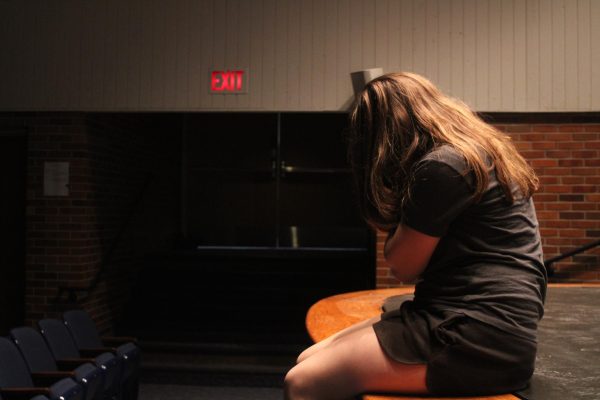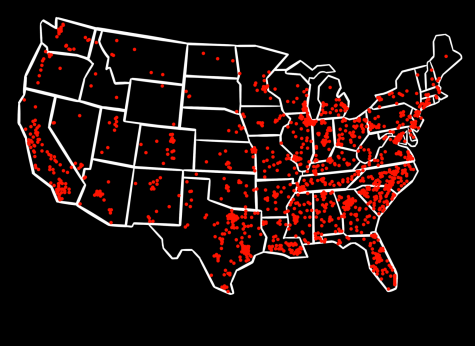District-wide decisions demand student representation
November 20, 2020
In a District 225 board meeting on Sept. 21, masked school board members sat six feet apart around a square table, tapping notes onto keyboards and shuffling papers. The meeting, streamed to the public via Zoom and a panoramic camera, addressed a critical question: was the district going to move into Step 3 (hybrid) of the Fall Reopening Plan, or would learning stay remote? As the camera panned around the room, one aspect was obvious—amidst the various board members and administrators present in the room, the very group the board intended to serve was absent: students.
Only 24.4 percent of students feel their voice is represented when the district makes substantial decisions, whereas nearly half (49.5 percent) feel their voice is not represented, according to an unscientific survey conducted by The Oracle of 624 students.
To better represent the student body, The Oracle Editorial Board advocates for the creation of three Student Representative roles to serve as liaisons between students and the board and represent the voice of the student body. The Editorial Board suggests that three roles be created at both South and North, and be filled via an application process.
Student Board Representatives exist around the nation and in neighboring school districts, but no such position exists at South, Principal Dr. Lauren Fagel said. At Libertyville High School, senior Amal Hasan is a Student Board Representative for District 128. She works with two other students from Libertyville and three students from Vernon Hills to bring the unheard voices of the schools in front of their board.
“The district board is there for community members, it’s there for parents, it’s there for administration, it’s there for staff, but most importantly it’s there for students,” Hasan said. “[The board doesn’t] necessarily understand what’s going on at our schools because they’re not there [every day], so we have to inform them of what’s going on so they can make decisions based on that.”
Not only do a myriad of schools around the country have Student Board Representatives, but the Illinois State Board of Education (ISBE) boasts a 21-member Student Advisory Council (SAC) to serve the same purpose: providing student perspectives on the state’s education policies. Composed of students from around the state, the SAC works to vocalize broader Illinois student input to the ISBE and to present ISBE policies to students in an accessible way.
The Oracle Editorial Board believes that the creation of a group of Student Board Representatives with the same goal for District 225 will allow students to feel more heard by the board, allowing the latter to make decisions that better serve the students. The vast majority of South students agree, as 81.7 percent of students said they would be in favor of the creation of such a role, according to an unscientific survey conducted by The Oracle of 624 students.
Peter Glowacki, vice president of the District 225 board, noted that student input is not entirely absent from districtdecision-making. Students are invited to share thoughts during public comment, a segment of meetings where all community members have the ability to voice concerns, and committees are sometimes formed with students to advise decisions, Glowacki said. However, he explained how more can always be done to reflect student opinions.
“The district demonstrates that it continues to grow and learn constantly from its experiences, so more can always be done to obtain more information and perspective effectively from the students, families, administrators and community in my opinion,” Glowacki said.
The Advisory Council is a body of administrators, parents, students and health officials that advises reopening decisions, according to Mark Maranto, assistant principal of student activities. However, the Council was only created to advise on issues regarding Covid-19 and is unlikely to continue once school returns to normal, Danny Hood, student body president and member of the council, said.
“There hasn’t really been talk about continuation of the committee because it’s almost like damage control and planning,” Hood said. “We are just trying to make sure that students are being extremely safe and this plan is enforced because safety is the number one priority.”
Maranto encourages students to participate in the public comment facet of board meetings as much as possible; however, Fagel explained that a permanent position reserved for voicing student concerns would offer more discussion between students and the board than the limited scope of public comment.
“I think [creating a group of Student Board Representatives] is a great idea,” Fagel said. “I would love to see there be something built in not just as a report, but that board members could feel free to ask them their opinion on certain things, or just ask them for their experience.”
Senior Petey Thomas is nervous about the well-being of students and staff who, like him, have high-risk family members, and feels that greater student representation in district decision making is necessary. Thomas favors creating a group of Student Board Representatives.
“The students are the ones who are the most impacted, aside from the teachers,” Thomas said. “We are the ones whose education is being altered because of [district decisions]. We should have a greater say in how this is happening.”
*The editorial expresses the opinion of the majority of the editorial board and not necessarily that of the publisher, adviser, school administration or staff.












